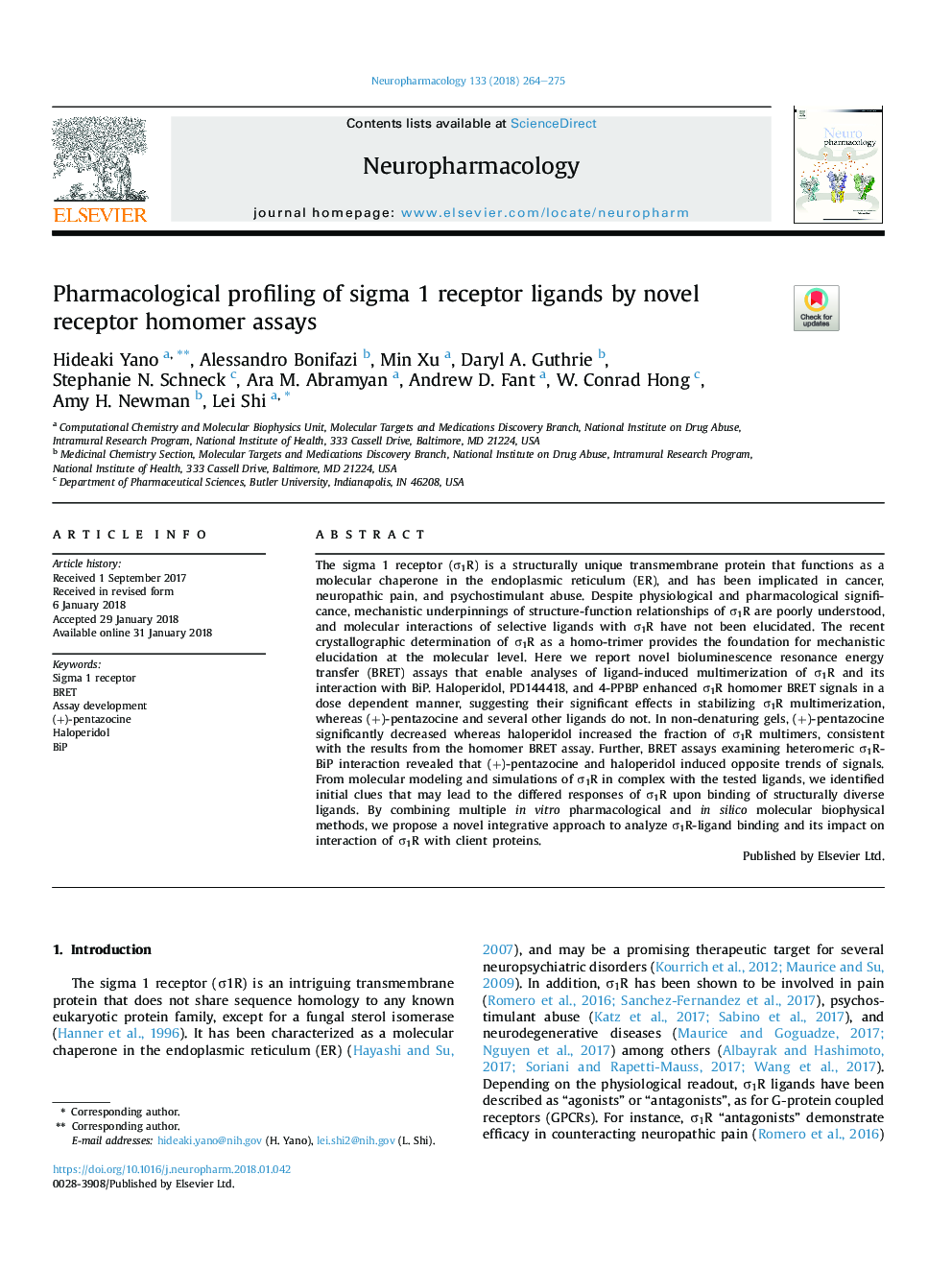| Article ID | Journal | Published Year | Pages | File Type |
|---|---|---|---|---|
| 8517027 | Neuropharmacology | 2018 | 12 Pages |
Abstract
The sigma 1 receptor (Ï1R) is a structurally unique transmembrane protein that functions as a molecular chaperone in the endoplasmic reticulum (ER), and has been implicated in cancer, neuropathic pain, and psychostimulant abuse. Despite physiological and pharmacological significance, mechanistic underpinnings of structure-function relationships of Ï1R are poorly understood, and molecular interactions of selective ligands with Ï1R have not been elucidated. The recent crystallographic determination of Ï1R as a homo-trimer provides the foundation for mechanistic elucidation at the molecular level. Here we report novel bioluminescence resonance energy transfer (BRET) assays that enable analyses of ligand-induced multimerization of Ï1R and its interaction with BiP. Haloperidol, PD144418, and 4-PPBP enhanced Ï1R homomer BRET signals in a dose dependent manner, suggesting their significant effects in stabilizing Ï1R multimerization, whereas (+)-pentazocine and several other ligands do not. In non-denaturing gels, (+)-pentazocine significantly decreased whereas haloperidol increased the fraction of Ï1R multimers, consistent with the results from the homomer BRET assay. Further, BRET assays examining heteromeric Ï1R-BiP interaction revealed that (+)-pentazocine and haloperidol induced opposite trends of signals. From molecular modeling and simulations of Ï1R in complex with the tested ligands, we identified initial clues that may lead to the differed responses of Ï1R upon binding of structurally diverse ligands. By combining multiple in vitro pharmacological and in silico molecular biophysical methods, we propose a novel integrative approach to analyze Ï1R-ligand binding and its impact on interaction of Ï1R with client proteins.
Related Topics
Life Sciences
Neuroscience
Behavioral Neuroscience
Authors
Hideaki Yano, Alessandro Bonifazi, Min Xu, Daryl A. Guthrie, Stephanie N. Schneck, Ara M. Abramyan, Andrew D. Fant, W. Conrad Hong, Amy H. Newman, Lei Shi,
